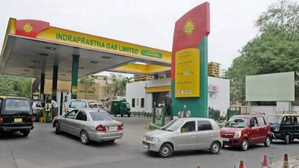India’s CNG vehicle count surged 3-fold to 7.5 million units in last 8 years amid green push: Crisil

New Delhi, Feb 19 (IANS) Domestic annual sales of Compressed Natural Gas (CNG) vehicles are forecast to reach 1.1 million units by the end of the current financial year, driven by the government’s ongoing push for cleaner fuels, according to a Crisil report released on Wednesday.
This will take the CNG vehicle count in India to 7.5 million, a 3 times increase from 2.6 million in fiscal 2016, and translate into a Compound Annual Growth Rate (CAGR) of around 12 per cent, the report states.
The rapid uptake has been undergirded by the expansion of the CNG infrastructure, with the number of filling stations set to rise to over 7,400 from 1,081 in fiscal 2016, etching a CAGR of 24 per cent.
The report also states that rising sales of CNG passenger vehicles has driven up their penetration in the overall passenger vehicle population to 15-16 per cent this fiscal-end vs 5.6 per cent in fiscal 2016.
The availability of over 30 CNG car variants, compared with single digit not long ago, thus catering to diverse consumer preferences, has accelerated adoption.
The commercial vehicle segment has also been gaining traction amid growing options that offer tangible cost savings, with penetration levels currently at 10-11 per cent.
Penetration in the two-wheeler segment is growing as well, following the introduction of CNG options, the report states.
However, the three-wheeler segment, which currently has a penetration level of 28-29 per cent, will need to navigate competition from Electric Vehicles (EVs), according to the report.
CNG consumption has increased in tandem with the rise in sales of CNG vehicles, at a CAGR of around 13 per cent between fiscal years 2016 and 2025.
The expansion and distribution of CNG infrastructure can be gauged from the fact that the share of the top five states has reduced to 55 per cent in fiscal 2025 from over 90 per cent in fiscal 2016, with newly awarded geographical areas gaining traction, the report points out.
Congestion levels at filling stations are also expected to decrease, with the number of vehicles per station reducing by around half since fiscal 2016, thereby enhancing overall customer experience and operational efficiency of the CNG stations.
Going forward as well, the expansion of CNG infrastructure in cities such as Chennai and in tier-II cities is expected to support sustained sales of CNG and, in turn, CNG vehicles, the report states.
However, on a cautionary note, the report also points out that the development of the CNG market could be impacted by factors such as low availability of cheap domestic natural gas and increasing competitiveness from alternative fuels.
Also, the recent cut in Administered Pricing Mechanism (APM) gas allocation for CNG, including a drop from 68 per cent to 51 per cent in October 2024, and a further reduction to 37 per cent in November 2024 (later revised to 50 per cent in January 2025), have created uncertainty and increased the gas sourcing cost of city gas distributors, the report added.
APM gas allocation is the supply of natural gas to city gas distributors (CGD) at a regulated price.
This gas is used for essential services like piped natural gas (PNG) and compressed natural gas (CNG).
–IANS
sps/rad



